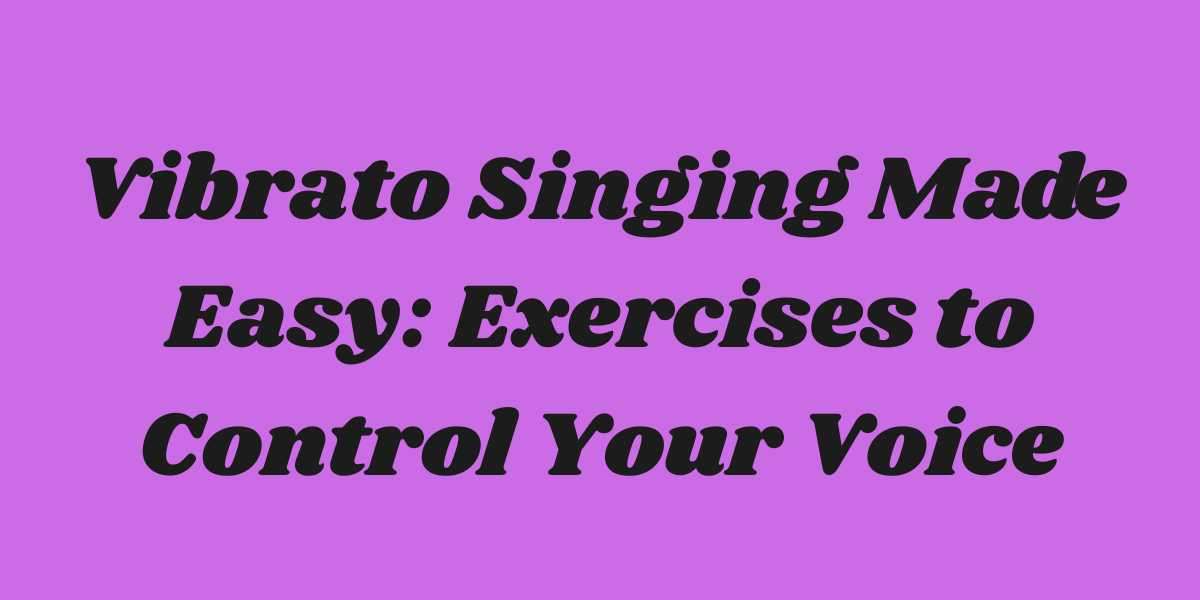Vibrato is one of the most expressive and dynamic qualities in a singer’s voice. It gives warmth, depth, and richness to every note, transforming simple melodies into emotional performances. Many singers dream of achieving a natural vibrato that feels effortless, but it often takes time and the right approach to master.
The good news is that with consistent practice and understanding how your body produces sound, you can develop a smooth and controlled vibrato. This guide will show you step-by-step how to improve your technique through easy and effective vibrato exercises.
What Is Vibrato in Singing?
Vibrato is the gentle fluctuation of pitch that occurs when your vocal cords are balanced and relaxed. It’s not forced or mechanical it’s a natural movement that happens when your voice is free and well-supported.
The ideal vibrato oscillates about five to seven times per second, adding resonance and character to your sound. When done correctly, it can make your singing feel more emotional and polished. However, when forced, it can sound shaky or uneven. The key to success is relaxation and proper breath control.
Why Practice Vibrato Exercises?
Many singers try to create vibrato by shaking their jaw or controlling the pitch manually, but this leads to strain and tension. The correct way is to let it happen naturally by training your muscles to stay flexible and balanced.
To start mastering vibrato, focus on building strength in your diaphragm and control over your airflow. This helps you develop a steady foundation for tone and pitch. Once that balance is in place, you can begin to incorporate into your daily routine for consistent improvement.
Step-by-Step Vibrato Exercises for Beginners
1. The Steady Tone Exercise
Begin by singing a single note on a vowel like “ah.” Hold it as steadily as possible without adding any shake. This trains your ear and body to recognize pitch stability, which is essential for natural vibrato.
2. Gentle Pitch Movement
Start with the same note, then slowly move it up and down by a half-step. Keep it slow and controlled, like a wave rolling gently. This helps you feel how vibrato naturally flows from relaxed muscles and consistent breath.
3. Diaphragm Pulse Exercise
Place a hand on your stomach and take a deep breath. As you sing a sustained note, lightly pulse your abdominal muscles to control airflow. This builds strength in your diaphragm, which supports steady vibrato without strain.
4. Lip Trill Vibrato Practice
Lip trills are excellent for developing flexibility and breath coordination. Try sustaining a trill while moving through scales or sliding between notes. You’ll notice how your voice begins to “vibrate” smoothly without tension.
Tips to Improve Vibrato Control
Once you’ve practiced the basics, focus on refining your tone and consistency. Here are a few tips that will help you improve faster:
Stay relaxed: Tension is the enemy of vibrato. Keep your neck, jaw, and shoulders loose.
Use your breath: Vibrato depends on steady airflow. Always breathe deeply from your diaphragm.
Warm up first: Never jump straight into vibrato practice; start with gentle humming or scales.
Avoid overdoing it: Vibrato should enhance your tone, not overpower it. Aim for balance.
Record yourself: Listening back helps identify uneven or forced vibrato.
Common Mistakes Beginners Make
Many new singers mistake forced vibrato for real vibrato. Shaking the jaw or throat to create the effect can damage your voice over time. True vibrato is controlled by consistent airflow and relaxation, not by muscular effort.
Another common mistake is neglecting breath control. Without enough breath support, vibrato can sound weak or irregular. Spend extra time building your diaphragm strength and focus on singing with steady airflow.
Finally, avoid copying other singers’ vibrato styles. Every singer’s vibrato is unique; develop your own natural rhythm instead of mimicking someone else.
Bringing Vibrato Into Your Songs
Once your vibrato feels natural and controlled, start using it in songs you love. Hold your long notes steady and gently introduce vibrato near the end of the phrase. This adds emotional impact and a professional finish.
Different music genres require different vibrato styles. Classical and jazz singing often use wider, slower vibrato, while pop and RB tend to use faster, more subtle waves. Experiment to find what fits your tone and musical style best.
Conclusion
Developing vibrato doesn’t happen overnight, but with consistent effort, you can achieve smooth and natural control over your voice. Practice daily, focus on breath and relaxation, and let your sound flow freely.
By mastering these simple vibrato exercises, you’ll strengthen your voice, improve pitch accuracy, and add emotion to your singing. With patience and dedication, your vibrato will become a natural part of your musical expression, helping you sing with confidence and soul.














